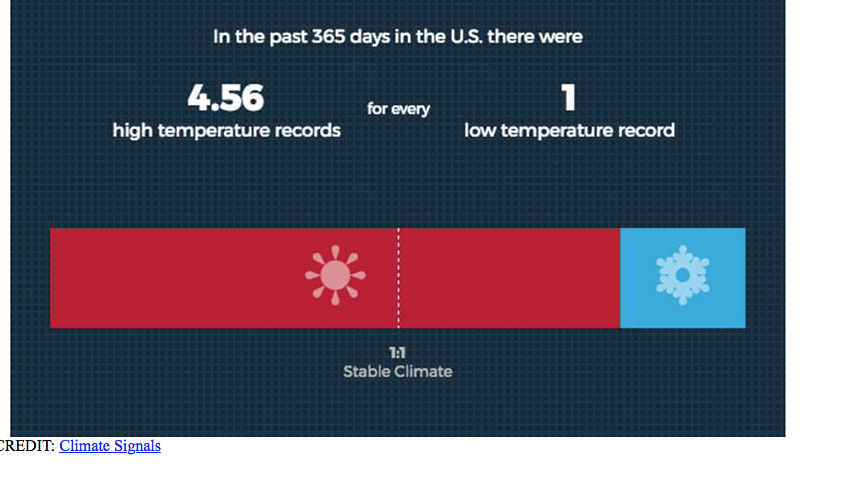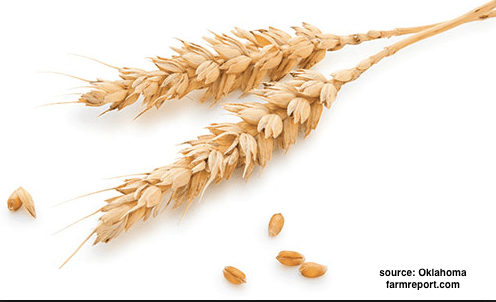Two years ago this month, in a well-publicized and much lampooned political stunt, Sen. James Inhofe (R-OK) brought a snowball to the Senate floor to highlight the “unseasonable” cold and cast doubt on climate change. The Republican lawmaker would have been hard-pressed to find a snowball anywhere in his home state this past weekend. Oklahoma just endured a spell of exceptionally warm weather. Mangum, Oklahoma saw temperatures close to 100º F, setting a state record. The average February high in Mangum is 56º F.
Many people may welcome a temperate day in February, but warm weather in normally cold months disrupts ecosystems. Trees may bloom after an unseasonably balmy spell — and then suffer frost damage when cold weather returns. Flowers may blossom and shed their petals before bees arrive to pollinate them. These minor destabilizations have a ripple effect, impacting flora, fauna, and the industries built around them. In Oklahoma, the spike in temperature is particularly ironic, given the state’s political climate. Inhofe is Washington’s most vocal climate denier, having published a book alleging that climate change is a hoax while serving as the ranking Republican member of the Senate Environment Committee. Inhofe will soon have an ally inside the EPA — Oklahoma Attorney General Scott Pruitt, President Trump’s pick to head the agency. Inhofe has described Pruitt, a longtime fossil fuel insider, as a “leader and a partner on environmental issues for many years.” Pruitt is expected to bring several former Inhofe staffers with him to his new office. As Oklahoma’s attorney general, Pruitt has sued the EPA many times, including over the Obama administration’s plan to limit carbon pollution from power plants. The Clean Power Plan is considered one of the most effective tools for curbing U.S. carbon emissions.
(excerpts from a recent article from Climateprogress.com)
WHEAT COMING OUT OF DORMANCY A MONTH EARLY WILL BE WATCHED BY TRADERS FOR ANY SPRING PROBLEMS–BUT A POSSIBLE WEAK EL NINO FOR SUMMER “USUALLY” BODES WELL FOR THE WHEAT CROP
The map at the top of the page shows the distribution of wheat classes grown in the U.S. These 1998 maps are the latest available for planted area by class of wheat.
The wheat market has been rallying as of late due to the demand side of the equation finally picking up, after several years of a longer term bear market due to a glut of supplies. Hedge funds are beginning to think that many grains are at “fair value”. Also, while not readily discussed, earlier dryness in Europe this winter and only fair conditions of the Texas and Oklahoma wheat crop, and the recent warm weather, is probably causing some psychological concerns about the U.S. crop. We are still about 2 months away before U.S and European/Russian weather will have more of an impact on yields and the wheat market. Any cold snap in April or early May will be important given that record warm Plains weather and the crop coming out of dormancy, early. However, historically given the big snows and rains out west and no chance for a spring/summer La Nina, the odds of the U.S. having major, bullish related spring problems to the wheat crop is probably unlikely. With the world awash in wheat, it will take crop issues in more than just one region of the world.
• The United States is a major wheat-producing country, with output typically exceeded only by China, the European Union, and India.
• Wheat ranks third among U.S. field crops in both planted acreage and gross farm receipts, behind corn and soybeans.
• U.S. wheat harvested area has dropped off nearly 30 million acres, or nearly one-third, from its peak in 1981 stemming in large part from foreign competition and because of declining returns compared with other crops and changes in government programs.
• About half of the U.S. wheat crop is exported.
• Despite rising global wheat trade, the U.S. share of the world wheat market has eroded in the past two decades.




